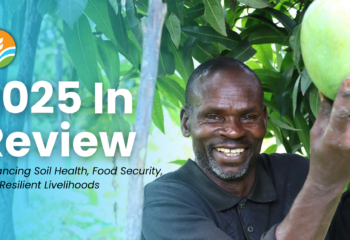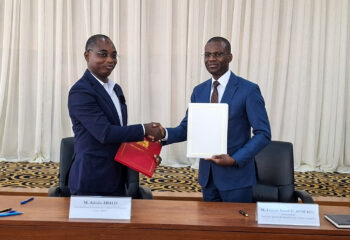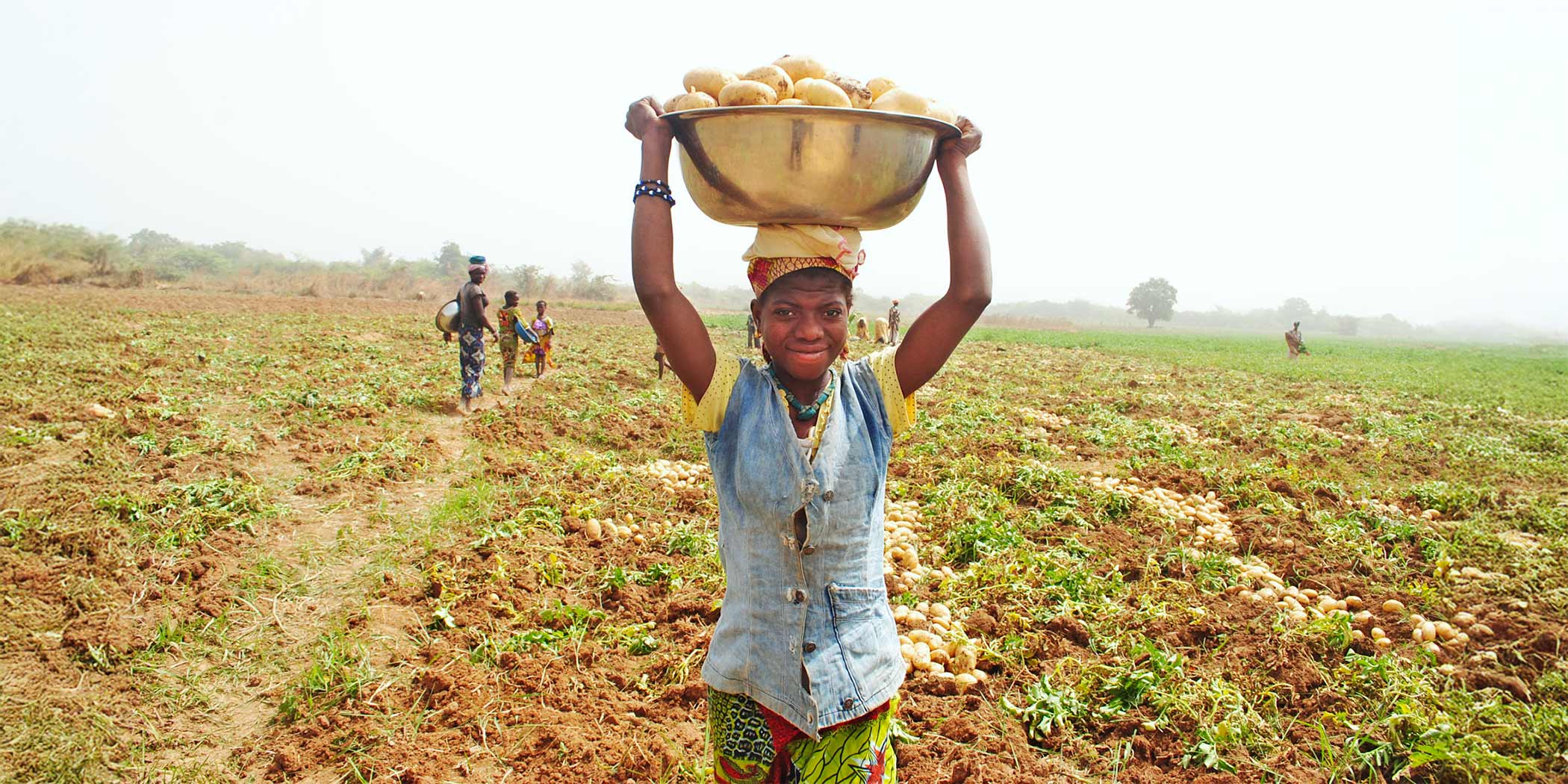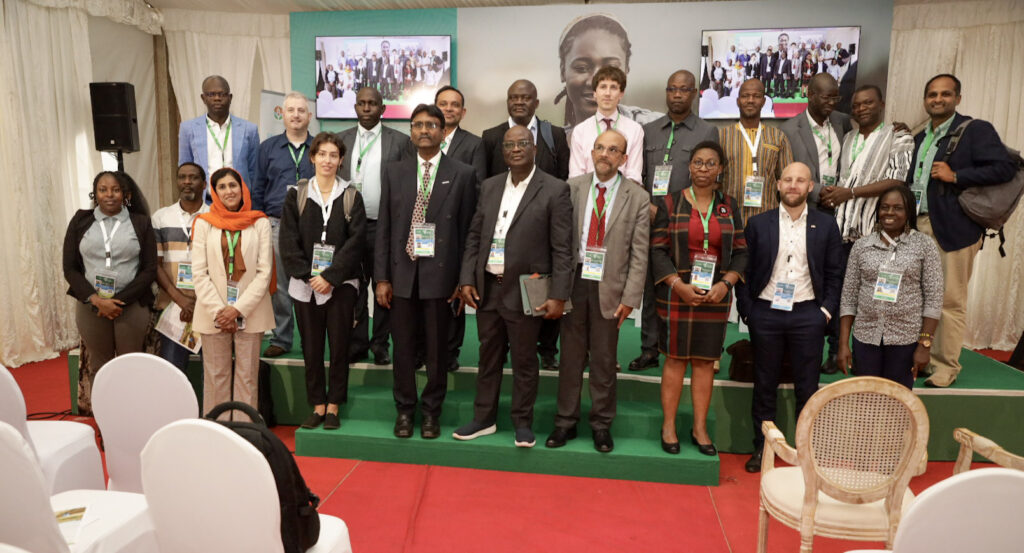
The vibrant city of Nairobi, Kenya, played host to the Africa Fertilizer and Soil Health (AFSH) Summit from May 7-9. This is a landmark event organized by the African Union. It is the second event of this scale following the Abuja Declaration in 2006, which aimed to increase nitrogen (N) fertilizer application from 8 kilograms per hectare (kg/ha) to 50 kg/ha. This target has not been achieved in many countries, hence the need to revive it with the Nairobi Declaration following the AFSH Summit. The vision of the AFSH Summit is to make Africa more self-sufficient to meet its own food security and serve as a breadbasket for the globe, through effectively using fertilizer and maintaining soil health. There were over 20 African presidents and many more vice presidents representing all African nations on the continent. There are few events that celebrate and promote the value of soils at such a scale.
Our side event, led by Professor Ruben Sakrabani from Cranfield University (UK) and entitled “Mapping Organic Feedstocks in Africa: A Step Towards Nature-Positive Fertilizer Production,” was selected through a competitive bidding process and took place on the afternoon of May 7, co-hosted with the International Fertilizer Development Center (IFDC). Approximately 70 delegates from farming communities and industries, as well as policymakers and researchers, attended the event. Using Mentimeter, an online survey tool, we investigated the sources of organic feedstock required to formulate organo-mineral fertilizers (OMFs), a novel class of fertilizers that blends mineral and organic feedstocks. Using Mentimeter, we were able to discuss survey output immediately with respondents.
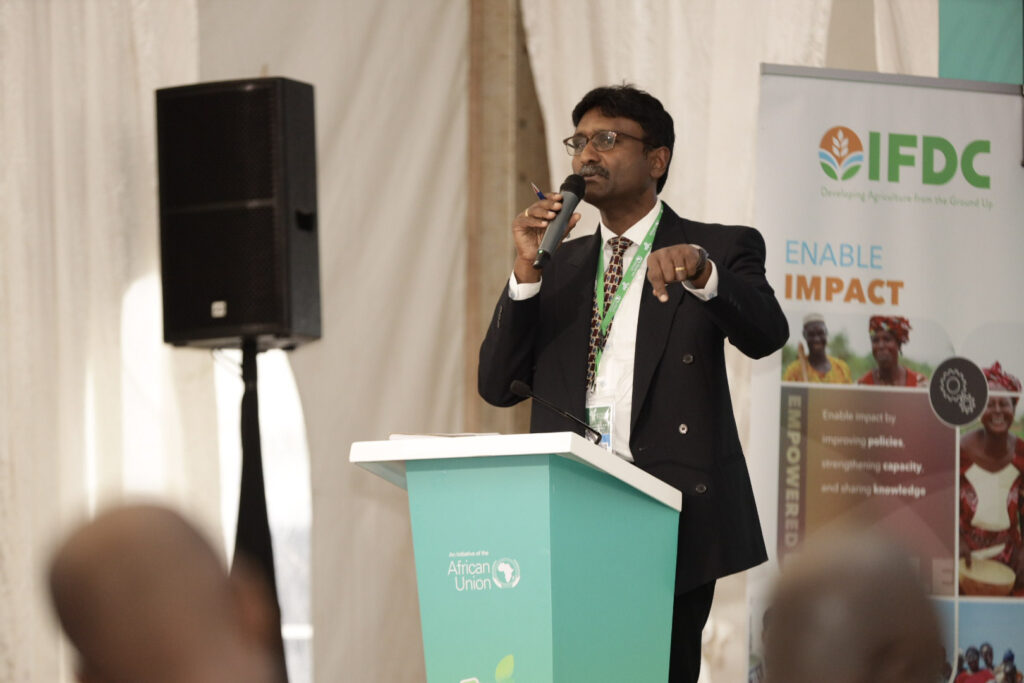
Our side event aimed to shed light on a new approach to fertilizer production that can assist African farmers. The session commenced with an enlightening talk by Professor Sakrabani on the potential of OMFs. His insights illuminated the transformative impact that OMFs could have on agricultural practices in Africa, offering a sustainable solution that enhances soil health and crop productivity. The event’s main objective was to establish a communication network channel between farmers to facilitate the exchange of insights and experiences related to OMF adaptation. This topic addressed one of the central issues discussed at the summit: combining the provision of crop nutrients with the maintenance of soil health.
Following Professor Sakrabani’s engaging discourse, Dr. Upendra Singh, Vice President of Research at IFDC, delivered a keynote address that focused on the imperative of developing OMFs for sustainable global nutrient production and management. With a wealth of knowledge and experience, Dr. Singh delivered a core message on the critical role that OMFs could play in addressing the dual challenges of food security and environmental sustainability on a global scale. Dr. Singh elaborated on the OMF success stories in the U.S., India, and Brazil. These included interventions to enable OMF applications, such as improved financing and investment, affordable organic and inorganic fertilizer, increased efficiency and resilience, and sustainable soil management.
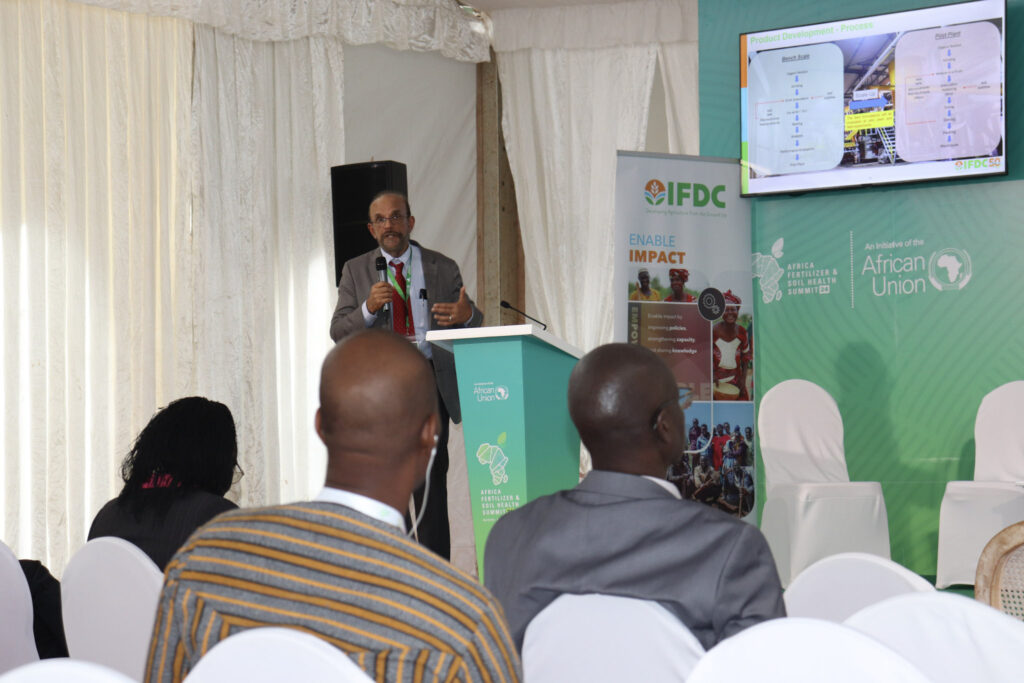
Central to our event was an interactive session that provided a platform for the 35 in-person and 34 online attendees to delve deeper into the intricacies of OMF production. Dr. Parveen Rupani and Dr. Patrick McKenna actively engaged with participants using Mentimeter to facilitate real-time feedback and engagement from them. Through interactive polls and surveys, we gleaned valuable insights that will inform future initiatives and collaborations in the realm of sustainable agriculture. Our Mentimeter survey indicated that most participants were highly educated: in fact, one-third held doctorates; but there was representation through to the high school level. Cereals were the main crops of interest for those seeking to learn about OMFs, and mineral fertilizer was the main source of crop nutrients in the countries of most participants, with compost, crop residues, and cow manure coming in after this. Reported application rates of N fertilizer were 88 kg/ha for cereals, 46 kg/ha for oil crops, 100 kg/ha for vegetables, and 78 kg/ha for perennial tree crops. Prohibitive cost was the most important factor restricting the use of fertilizer in each participant’s country, and limited access was second. These findings agree with the literature on this topic, which has consistently found that farmers in sub-Saharan Africa often lack the financial resources and market access to obtain quality fertilizer.
Reports from 95% of participants showed that farmers in their country would be interested in trialing organo-mineral fertilizers.
Potential feedstocks for OMFs vary broadly, but this survey indicated that livestock manure is the most significant source, followed by crop residues and market waste. Circular economy products such as sewage sludge and brewery waste were not found to be useful potential sources of feedstock for OMF production.
Half of participants believed potential OMF feedstocks were located within rural areas, while 25% believed they were in urban areas, and the remaining 25% replied with peri-urban areas. Some logistical challenges were highlighted by the findings that one-third of participants believed OMF feedstocks were located more than100 km from urban areas. Manufacturing centers require easy access to feedstocks to facilitate OMF synthesis, and these survey results indicate that OMF production may be challenging in some areas, given the significant separation between urban areas producing fertilizer and rural areas producing waste products for potential feedstocks. Almost every participant (~95%) also indicated they would not be willing to pay the same amount for an OMF as for a conventional fertilizer, highlighting concerns around quality and nutrient content which must be addressed by OMF producers. Despite this, participant interest in OMF remained as high as 80%, all of whom reported that they would be interested in doing OMF research in their country. As we reflect on the success of our side event, we are optimistic that OMF can play a role in achieving soil health through providing vital nutrients and recycling waste products in Africa. However, this hinges on innovation and garnering farmers’ satisfaction and trust in adopting this new product. We feel this is just the start of a long journey. However, armed with knowledge, innovation, and a shared commitment to sustainability, we stand poised to chart a course toward a greener, more resilient agricultural future in Africa.
It was fantastic to take part in the AFSH Summit activities, and the experience was even better with experts such as Dr. Rupani and Dr. McKenna sharing their knowledge as well. Additionally, this trip to Nairobi would not have been possible without funding from the Public Engagement Participatory Research Seed Fund.
Article written by Ruben Sakrabani, Professor of Soil Chemistry at Cranfield University.
The original version of this article can be viewed here.


